The following articles are brought to your attention courtesy of Ourtroops Newsladder, click on the above banner to find out more news concerning Our Troops, and at the bottom of each News Ladder page is a listing of News Ladders you can subscribe to.
Robert L. Hanafin
Major, U.S. Air Force-Retired
Veterans Advocacy Editor, VT News Network
On Editorial Board of OurTroops News Ladder 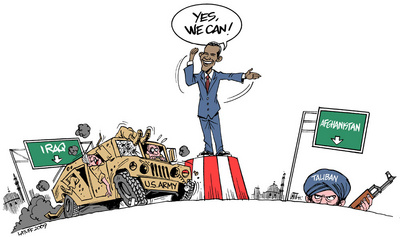 War in Afghanistan Is Being Fought on Two Fronts
War in Afghanistan Is Being Fought on Two Fronts
The Obama administration is fighting two battles on Afghanistan now. One is the newly expanded fight on the ground against the Taliban. The other is a fight against the clock in Congress, where patience could wear out before the Taliban do. See Video
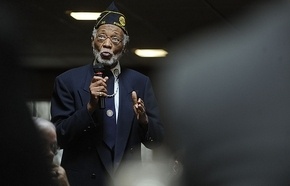 Congressman hears Veterans: Services still inadequate
Congressman hears Veterans: Services still inadequate
Services for returning military veterans have improved dramatically in the last two years, including faster assistance for mental health issues, homelessness and job training, a panel of experts on veterans’ benefits said but they still aren’t where they need to be for the 1 million GIs returning from conflicts across the globe, local veterans told officials. As the U.S. House of Representatives considered Veterans Affairs funding for fiscal year 2010, a group of Metro Detroit veterans and their families gathered with U.S. Rep. Gary Peters, D-Bloomfield, and retired U.S. Army Gen. Wesley Clark to consider the needs of veterans in Michigan and across the nation. Kathleen DeGrazia brought the room to silence when she described the "hell" her son Andy Kubik has endured trying to get help from the VA after his 14 years of service. Kubik, who turns 37 today, received a bronze and silver star and was featured on "60 Minutes," yet, DeGrazia said, he couldn’t get anyone’s attention in the department when he returned from the Middle East in 2004. DeGrazia, who is from Texas, is staying in Irish Hills to help her son.
"We have tried to let our government know that our sons and daughters are not being cared for. Please, please, please help," she said.
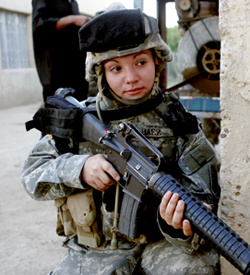 More female veterans are winding up homeless
More female veterans are winding up homeless
VA resources strained; many are single parents
The number of female service members who have become homeless after leaving the military has jumped dramatically in recent years, according to new government estimates, presenting the Veterans Administration with a challenge as it struggles to accommodate the hundreds of thousands of returning veterans from Iraq and Afghanistan. As more women serve in combat zones, the share of female veterans who end up homeless, while still relatively small at an estimated 6,500, has nearly doubled over the last decade, according to the Department of Veterans Affairs. As more women serve in combat zones, the share of female veterans who end up homeless, while still relatively small at an estimated 6,500, has nearly doubled over the last decade, according to the Department of Veterans Affairs.
Many of them are like Angela Peacock, a former Army sergeant who was diagnosed with PTSD when she returned from Iraq in 2004 and became addicted to pain-killers. Later evicted from her apartment in Texas, she spent more than two years "couch-hopping” between friends and family before moving in as a squatter in an empty house in St. Louis.
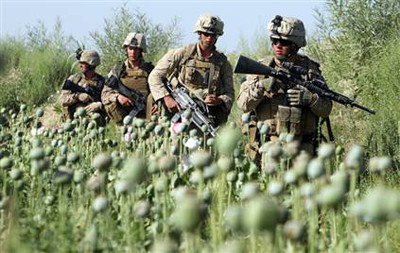 Wounds of War: Drug Problems Among Iraq, Afghan Vets Could Dwarf Vietnam
Wounds of War: Drug Problems Among Iraq, Afghan Vets Could Dwarf Vietnam
Drug Addiction Rates in Afghan/Iraq Vets Could Surpass Vietnam’s Rates
The U.S. could face a wave of addiction and mental-health problems among returning veterans of the Iraq and Afghan wars greater than that resulting from the Vietnam War, according to experts at the recent Wounds of War conference sponsored by the National Center for Addiction and Substance Abuse (CASA*) at Columbia University (Join Together is a project of CASA). Rather than the heroin addictions many Vietnam veterans brought back with them from Southeast Asia, however, today’s returning soldiers are more likely to be addicted to prescription medications — the very opiates prescribed to them by the military to ease stress or pain — or stimulants used by soldiers to remain alert in combat situations.
Long Tours a Major Source of Stress: Panelists at the May 20 conference, held at CASA’s conference center in New York, said that while combat may have been more intense in Vietnam, tours of duty were limited. Soldiers in Iraq and Afghanistan, by contrast, often have served multiple tours in combat areas, with extended periods of time away from family and home.
"In the history of the Republic, never has so much been placed on the shoulders of so few for so long," said Brigadier General Loree K. Sutton, director of the Defense Centers of Excellence for Psychological Health and Traumatic Brain Injury, part of the Defense Department’s Military Health Systems. As a result, she said, "We have no reference population" to compare with the addiction and mental-health problems facing today’s military personnel. Unsurprisingly, the strains on the system have led military commanders to "get men back in the fight" rather than confronting addiction and mental-health problems in the ranks, said McDonough. "Between 2004 and 2006, the incidence of substance abuse went up 100 percent, while treatment referrals by commanders went up zero percent," he said. Renner predicted that the rate of Post Traumatic Stress Disorder (PTSD) "will be much higher than in Vietnam."
Stigma, Fear for Career are Barriers: Returning veterans are screened for addiction and mental-health problems like PTSD, but many soldiers are reluctant to admit to problems out of fear that disclosure will affect their careers inside and outside the military, experts said. In many cases, "The reality is that if you come forward and get help … it will be in your record," said Gen. Sutton.
Female Vets Face Special Challenges: Female soldiers are technically barred from serving in most combat-related positions, but in conflicts like Iraq and Afghanistan there are no real front lines, and women often come under fire and face the existential threat of roadside bombings alongside their male colleagues. Women also have reported high rates of sexual abuse and rape while in combat areas, but are often reluctant to report incidents to male superiors. "Many prefer to live with the trauma than the address it," said Alexander Neumeister, M.D., associate professor of psychiatry at Yale University and the VA Connecticut Healthcare System.
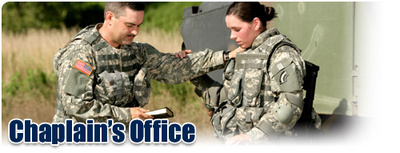 National Guard units strained by chaplain shortage
National Guard units strained by chaplain shortage
The guard’s shortfall stems primarily from a lack of Roman Catholic priests willing to volunteer. Catholic dioceses that face a national shortage of priests may find it difficult to replace chaplains – even for one weekend a month.
"The priest has those responsibilities on weekends, and two weeks of training," Fehn said. "That impacts the priest’s ability to be with the congregation on weekends for weddings and funerals. And then that priest might be gone for deployment."
The Army National Guard has just six rabbis and no imams for its 362,000 guardsmen. Clergy from smaller Christian denominations and other faiths also are needed. Exactly how many clergy are deemed enough per guard unit varies. The Army National Guard’s goal is a chaplain for every battalion, which range from 500 to 700 soldiers. The goal for Air National Guard units is three chaplains and three chaplain assistants per wing; wings generally have about 1,000 members.
"It makes it harder to provide religious support," said Chaplain Samuel J.T. Boone, commandant of the U.S. Army Chaplain Center and School at Fort Jackson, S.C. "There are some people who we can’t provide their religious rites and sacraments as we can back here in the states."
Chaplains serve as more than ministers for guardsmen in harm’s way. They are confidants, counselors and arbitrators. In Iraq and Afghanistan, unit commanders have used chaplains to communicate with local leaders and clergy. Many chaplains are embedded with units and travel through war zones, putting them within arm’s reach of soldiers. At Fort Jackson, Boone works with new chaplains to get them into the field as quickly as possible. Training exercises include lessons on how to avoid attacks, how to work with soldiers in high-stress war zones and how to communicate with locals.
"We tell guys, ‘If you’ve seen a lot of John Wayne movies, don’t be like John Wayne,’" Boone said.
Though they don’t carry weapons, chaplains are sometimes caught in enemy attacks.
Posted by: Robert L. Hanafin
Veterans Advocacy Editor
VT News Network
OurTroops News Ladder
Readers are more than welcome to use the articles I’ve posted on Veterans Today, I’ve had to take a break from VT as Veterans Issues and Peace Activism Editor and staff writer due to personal medical reasons in our military family that take away too much time needed to properly express future stories or respond to readers in a timely manner.
My association with VT since its founding in 2004 has been a very rewarding experience for me.
Retired from both the Air Force and Civil Service. Went in the regular Army at 17 during Vietnam (1968), stayed in the Army Reserve to complete my eight year commitment in 1976. Served in Air Defense Artillery, and a Mechanized Infantry Division (4MID) at Fort Carson, Co. Used the GI Bill to go to college, worked full time at the VA, and non-scholarship Air Force 2-Year ROTC program for prior service military. Commissioned in the Air Force in 1977. Served as a Military Intelligence Officer from 1977 to 1994. Upon retirement I entered retail drugstore management training with Safeway Drugs Stores in California. Retail Sales Management was not my cup of tea, so I applied my former U.S. Civil Service status with the VA to get my foot in the door at the Justice Department, and later Department of the Navy retiring with disability from the Civil Service in 2000.
I’ve been with Veterans Today since the site originated. I’m now on the Editorial Board. I was also on the Editorial Board of Our Troops News Ladder another progressive leaning Veterans and Military Family news clearing house.
I remain married for over 45 years. I am both a Vietnam Era and Gulf War Veteran. I served on Okinawa and Fort Carson, Colorado during Vietnam and in the Office of the Air Force Inspector General at Norton AFB, CA during Desert Storm. I retired from the Air Force in 1994 having worked on the Air Staff and Defense Intelligence Agency at the Pentagon.
ATTENTION READERS
We See The World From All Sides and Want YOU To Be Fully InformedIn fact, intentional disinformation is a disgraceful scourge in media today. So to assuage any possible errant incorrect information posted herein, we strongly encourage you to seek corroboration from other non-VT sources before forming an educated opinion.
About VT - Policies & Disclosures - Comment Policy




